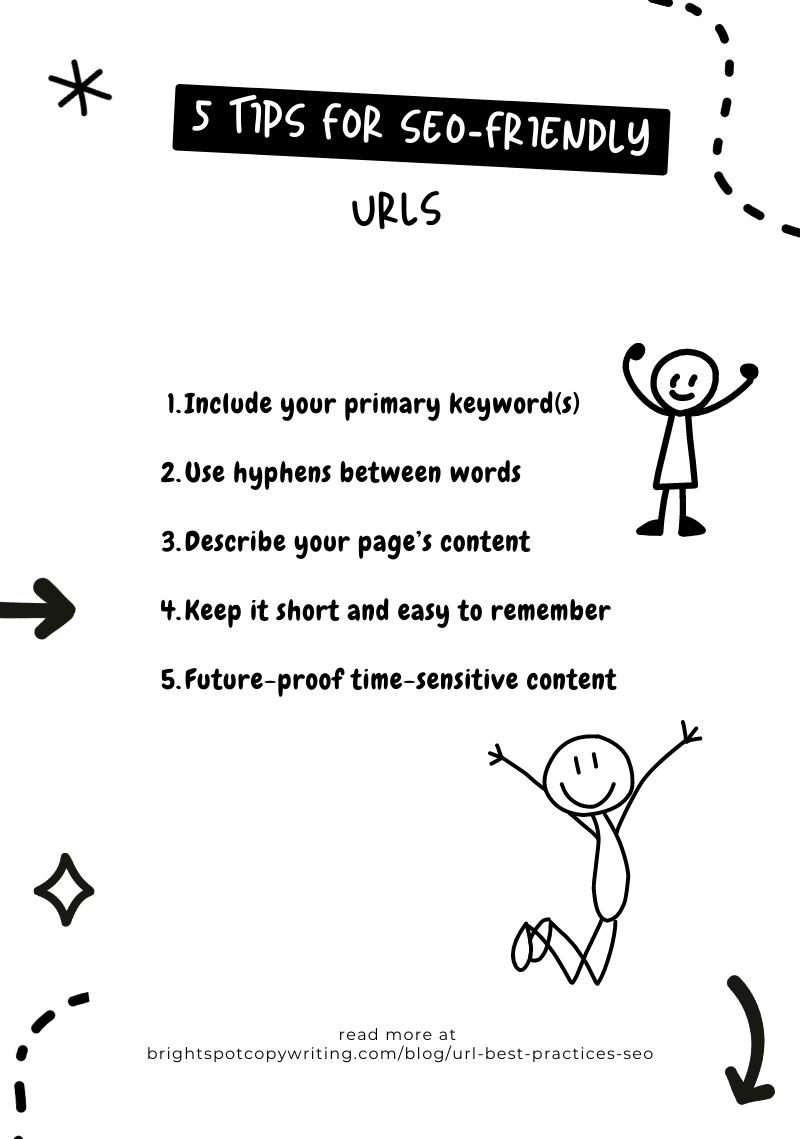SEO URL Best Practices: 5 Tips for SEO-Friendly URLs
SEO is like a jigsaw puzzle — every piece helps to create the whole picture. And like that jigsaw puzzle, it’s frustrating to spend hours doing the work only to have it be incomplete. Whether it’s a new sales page or a blog post, going from start to finish is a lot of work — there’s research, writing, formatting, publishing, and promotion.
To get the complete picture (and the SEO benefits), follow a few SEO URL best practices. Be sure to include every piece of the SEO puzzle so your hard work gets seen and shows up on the first page of search results!
Each URL on your website affects how well your pages rank on search engines like Google.
Creating SEO-friendly URLs that rank well isn’t hard to do — you just have to know what makes a good URL for SEO. Check out Google’s official support article, Google URL Structure Guidelines, for the complete list of URL structures they support.
Blogging is alive and well!
Benefit from organic traffic with these SEO-friendly URL examples
1. Include primary keywords (without acronyms)
Imagine you’re publishing a blog post about how yoga can help people experiencing anxiety. Your primary keywords are Yoga and Anxiety.
✅SEO-friendly URL:
yourdomain.com/yoga-for-anxiety
❌ Not an SEO-friendly URL:
yourdomain.com/yfa
Acronyms don't include keywords. So, in the example above, Google wouldn't recognize “yfa” as the keywords yoga and anxiety.
2. Use hyphens between words
Hyphens help search engines understand your post's topic, so including them between words is essential for crawling and indexing.
Crawling is when a search engine crawls web pages to identify code and content.
Indexing is when a search engine stores and organizes the information it finds from crawling.
When Google crawls your site’s content, it must be able to read the words in the URL to properly index your site for optimal ranking. Adding hyphens between words helps Google pick up the keywords you want to rank for.
✅ SEO-friendly URL:
yourdomain.com/yoga-for-anxiety
❌ Not an SEO-friendly URL:
yourdomain.com/yogaforanxiety
3. Describe your page’s content
Optimizing a URL means accurately describing a post’s content using as few words as possible. Let’s use our yoga for anxiety blog post as an example. You just published a blog post about ten specific yoga poses people can do when experiencing anxiety.
✅ SEO-friendly URL:
yourdomain.com/10-yoga-poses-for-anxiety
❌ Not an SEO-friendly URL:
yourdomain.com/10-yfa-poses
This URL includes your primary keywords, yoga and anxiety — and tells your reader (and Google) exactly what your content is about. Now, your post is more likely to rank when someone searches the long-tail keyword “yoga poses for anxiety.”
4. Keep URLs short and easy to remember
Does URL length matter for SEO? Yes! The longer the URL, the harder it is for Google to crawl, index, and rank your site well. Keep it short and sweet. The optimal URL length for SEO is 3-5 words.
✅ SEO-friendly URL:
yourdomain.com/10-yoga-poses-for-anxiety
❌ Not an SEO-friendly URL:
yourdomain.com/10-yoga-poses-for-anxiety-and-why-you-should-do-them-everyday
5. Future-proof URLs
Let’s say you write a post about the 11 Best Yoga Accessories for 2023, you can future-proof your URL by leaving out the year. There are big benefits to doing this!
When leaving the year out of the URL, you can update the content each year with the same evergreen URL. The URL has already established its ranking in search engines, so why change it? Plus, anyone who clicks on the link finds your updated content each time, no matter the year.
✅ SEO-friendly URL:
yourdomain.com/best-yoga-accessories
❌ Not an SEO-friendly URL:
yourdomain.com/2022-best-yoga-accessories
Photo by John Schnobrich on Unsplash
What do you do with older URLs that need to be optimized for SEO?
You may need to update a URL when…
you move to a new domain
the old URL doesn’t contain relevant keywords
the old URL is too long and difficult to remember
In these cases, consider updating to a more SEO-optimized version. Search Engine Land covers updating URLs in depth on their blog.
SEO URL best practices for updating old URLs
Set up a 301 redirect to reroute traffic to the new URL so that when people click on the old link, they’ll reach the intended content (not a 404 page). Check with your CRM, like Squarespace or WordPress, for their guides on how to set up a 301 redirect.
Manually reindex your URL in Google Search Console. Manually reindexing helps to speed up Google’s indexing process, and it only takes a second to do.
Want to optimize every blog post you publish for SEO and greater reach? Download my free Blog SEO Checklist today.
Preserve rankings and traffic with SEO-friendly URLs
Creating a simple and SEO-friendly URL helps your content rank, and as you now know, it’s super easy to do. Here’s a handy checklist for you to use when you create a new URL on your website!
✅Checklist: SEO-optimized URLs best practices
Include your primary keyword.
Keep URLs short, simple, and clear.
Include a hyphen between words.
Futureproof URLs by not including the year.
Now that you know what works, put it into action!
In this post, I’ve covered SEO URL best practices and SEO-optimized URL examples to help you get high-ranking pages for your site. The small changes you make now have a big impact on how well your website ranks over time.
It’s totally possible to grow your reach with tried-and-true marketing strategies like SEO optimization. You certainly don’t need to spend thousands of dollars in ad spend or hundreds of hours on social media. Your website is there to do the heavy lifting for you, so you can focus on what you do best!
When you’re ready, I’m happy to help you get SEO-optimized and conversion-driven website copy and blog content. Book your copy audit below!



